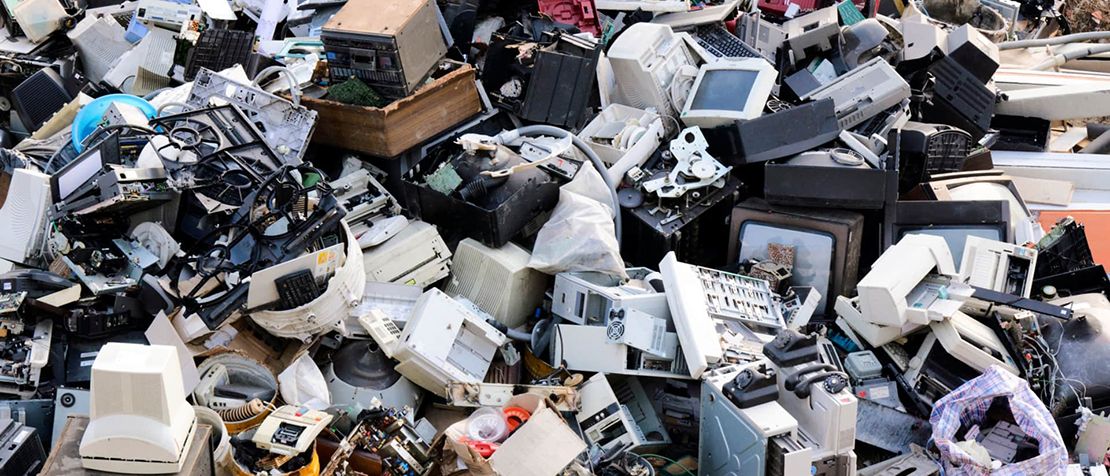
How ‘telecom circularity as a service’ can reduce e-waste
Technology’s role in society will continue to grow in years to come. That role includes enabling the United Nations Sustainable Development Goals (SDGs). But can tech get in line with societal needs?
In 2017, an Accenture/GeSI report came out showing what ‘digital access’ can do to ensure the world’s growth is more sustainable. A clear link was shown to many of the SDGs and the increased use of digital technologies. This means that positive impacts – such as the reduction of poverty and hunger, and many others – can be supported by current and expected advancements in the world of tech.
Electronic waste, or e-waste, is the world’s fastest-growing waste stream, the report stated. This boils down to a ridiculous reality: especially in emerging markets, it is estimated that more than one billion mobile phones would reach end-of-life and their owners would not have access to any form of recycling facility or service. As a result, electronics that bring so much value to people’s lives in developing countries, often end up in landfills or are even burned.
Can e-waste be an opportunity for business and society?
E-waste is, thus, rightfully seen as one of the ICT industry’s biggest global challenges. But what if it’s actually a huge opportunity for business and society? That’s the question the telecom industry in the Netherlands asked, and the answer led to a completely new approach to the recycling challenge.
“The telecom industry is in a great position to deliver key tools for a transition to a world that’s in line with the UN Global Goals.”
One global development to tap into is on the agenda for just about any large organization: green procurement. Ecovadis’ research in 2017 mentioned that some 97 per cent of all corporates, municipalities and national governments aim to buy stuff in a more responsible way. But that aim is quite difficult to deliver on, for the ICT industry. Electronics’ supply chains are notoriously difficult to create transparency on, let alone make more sustainable. Two problems? Or one opportunity?
‘One for One’
The T-Mobile, Samsung and Dutch social enterprise Closing the Loop took the latter view. They implemented a circular service now commonly known as ‘One for One’. It is explained in this short video, and is quite straightforward.
RELATED: How Switzerland is winning the battle against e-waste
The material footprint of a new phone sold in the Netherlands is offset by recycling one old ‘scrap phone’. The latter is collected in the emerging world, where electronic waste is abundant.
In the Netherlands, the service is award-winning as it’s a simple, transparent way to offer green services – or ‘circularity’ – to customers. These customers, such as the Dutch government, are now able to procure phones in a greener, ‘closed loop’ way.
‘Circularity as a service’
So, how does ‘circularity as a service’ work?
When a customer purchases a new phone, a small fee is added to the purchase price. That fee is used by Closing the Loop to collect an end-of-life scrap phone in a developing country, such as Ghana. The scrap phone is bought through small phone repair shops or other informal channels. Thus creating jobs and income, while reducing pollution. Next stop: Europe, where this ‘waste’ can be recycled and over ten – increasingly scarce – precious metals are extracted and made fit for re-use.
An ‘easy introduction into circularity’ is something many organisations are looking for. Most did not see ‘closed loop IT purchasing’ as a key impact area for them (which it is for consulting firms, IT focused companies and of course the telecom industry).
It was found that compensating for the material footprint of phones – used by every employee, every day – is a great way to engage and educate this stakeholder – or any stakeholder, for that matter.
The telecom industry is in a great position to deliver key tools for a transition to a world that’s in line with the UN Global Goals.
GSMA’s 2019 Mobile Industry Report reconfirmed just that, as did research by Deloitte and GeSI. But most of all, the telecom industry is really good at telling great stories.
That strength and marketing power can be used for a green purpose; to create an appealing story of how we can all contribute to more recycling — not because you have to, or by stating it’s one’s responsibility. But because it’s a fun, easy and good thing to do.
